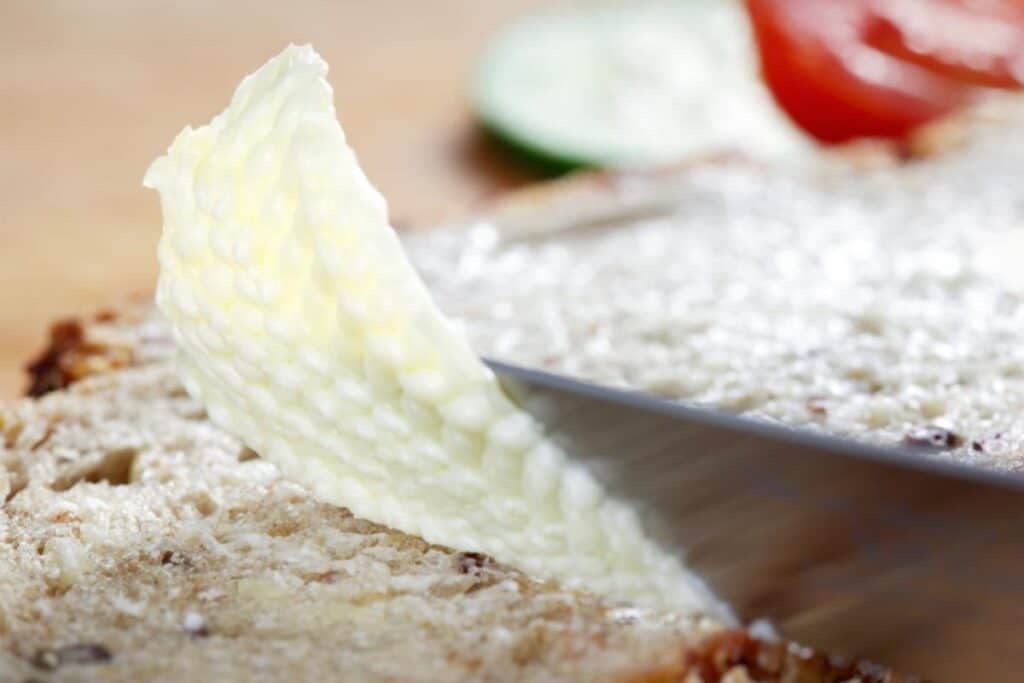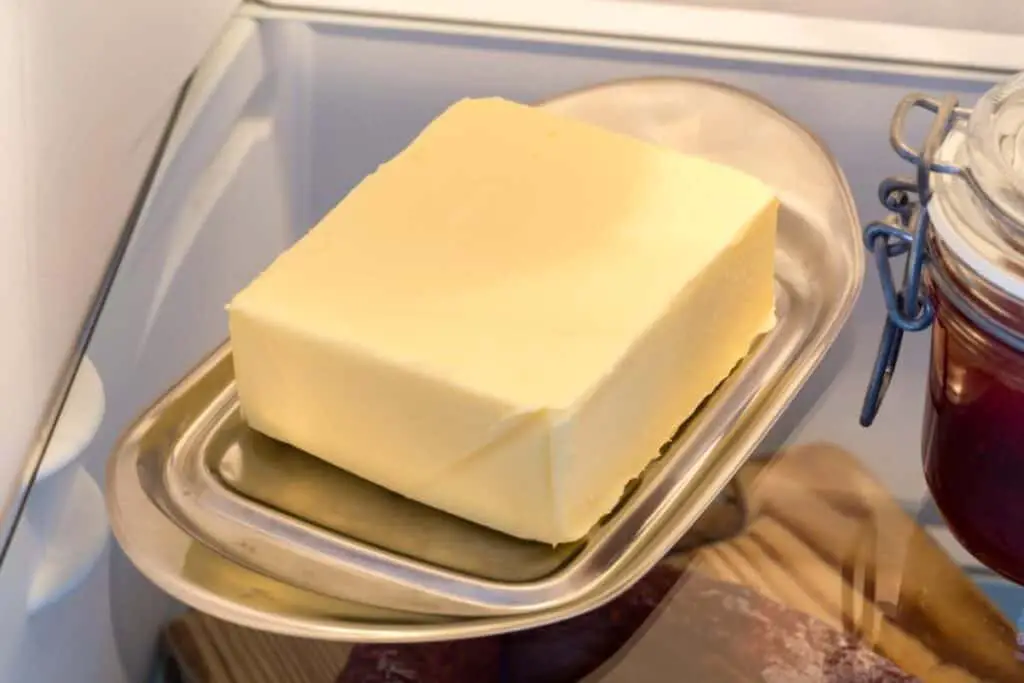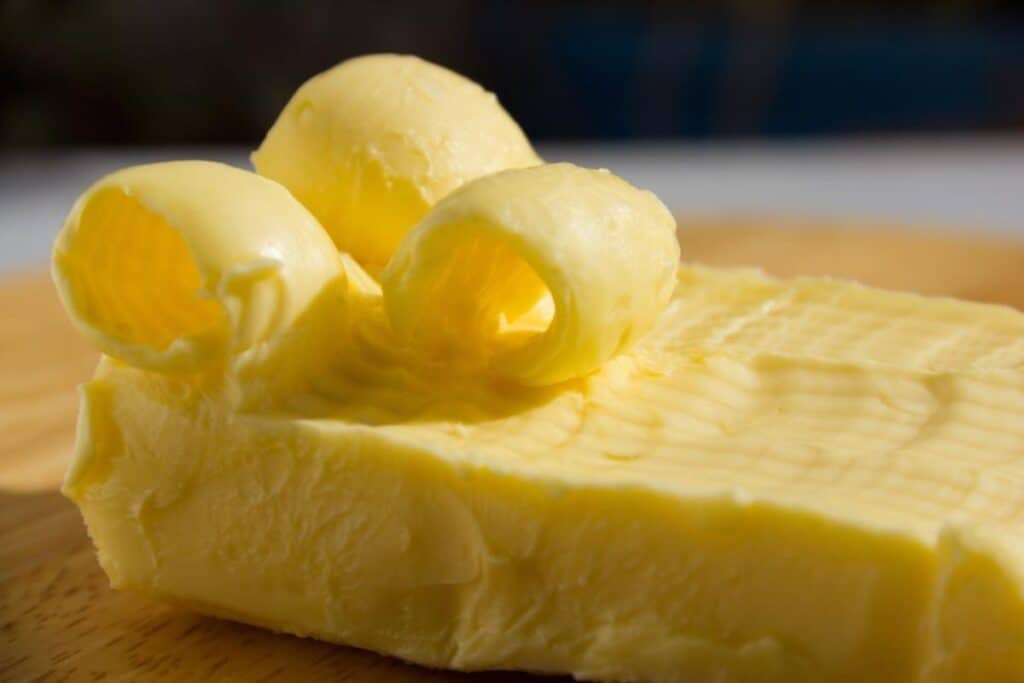Butter is used on toast in the morning, added to lots of baking recipes, and even used as a dipping sauce for lobster and breadsticks. This beloved ingredient is loved all around the world, but not many people know how it’s made, where it came from, and why it’s so important in baking.
You’ll find answers to questions such as should you refrigerate butter, or if salted butter can be used in place of unsalted. If you want to know more about it, keep reading!

What Is Butter?
It is created by beating cream until it turns semi-solid. We spread butter on foods like bread or bagels, but it’s also used heavily in baking and cooking recipes.
A History of Butter
Butter has been a staple part of many cultures and cuisines. The ancient Romans used it to soothe aching joints, while Indians have used ghee, clarified butter, to nourish their hair. It may be an important ingredient, but its history is more complicated.
We can first date butter back to as early as 6,500 BC. Biogeochemists from the University of Bristol discovered milk fat residues on Turkish pottery. As raw milk wasn’t consumed at the time, we can assume that the milk fats came from butter, cheese, or yoghurt.
Others believe that ancient nomads first created butter. While they travelled lengthy distances, the nomads would carry milk sacks with them, attaching them to their animals. Over time, the journey churned the cream into butter.
We still use a churning process to create it today, though the method is more advanced than it used to be.
How it is Made?
It is made by heating milk up to 50°C. The milk is then poured into a centrifuge. This machine spins the liquid around to obtain cream from the milk. The cream needs to be cooled until it reaches 5°C. Once it reaches this temperature, it can be stored away until the pasteurization stage (heat treatment).
The cream needs to be churned into butter. To do this, the cream is churned at a high speed inside a vat. As it begins forming, a liquid is left behind known as buttermilk.
The buttermilk is removed, then the remaining butter is pushed through plates with holes in them. This removes any leftover buttermilk and turns it into a thicker substance.
If the butter is meant to be salted, salt will be added at this point. It is then molded into blocks, which are then packaged and sold later.
Unsalted vs. Salted: What’s The Difference?
Salted butter is butter with added salt. The salt gives it a pleasant taste, but it also works to preserve the butter, giving it longer shelf life. Salted butter goes well with bread or desserts.
Unsalted butter doesn’t contain any extra salt. This means that it’ll go bad quicker than salted one, though this means that it will have a fresher taste. As there’s no salt, unsalted butter can taste slightly sweet due to the cream. Unsalted butter is best used in baking, as salted one can affect the taste of your recipe.
Does Butter Help In Baking?
You might be wondering, what is the function of butter in baking? It doesn’t just taste good, it plays an important role in creating well-made baked goods.
Taste
It may be obvious, but butter adds a nice flavor to pastries, cakes, and other baked goods. This flavor is tough to replicate without it. You can purchase butter-flavored items, like essences and oils, but these don’t contain the natural richness that comes from true butter.
Makes Treats More Tender
Fats are important in baking as they make foods more tender. Think about a baguette vs brioche bread. Baguettes don’t contain any fat, so they’re crusty and chewy. Brioche contains a decent amount of it. The fat makes the bread tender and soft.
Butter (and other solid room temperature fats) shorten gluten strands. When the butter comes into contact with flour, it stops gluten from developing as quickly. This makes the food more light and tender.
Leavening
Leavening is the process of creating steam which makes something rise. Butter can make several baked goods rise, such as puff pastry. The pastry has butter slathered within the dough, which helps it to rise well.
Butter also contains a small amount of water. When solid butter enters a hot oven, the water begins evaporating, creating steam. These vapors are trapped inside the dough, which makes it rise.
Should it Be Refrigerated?

Many people argue over whether it should be refrigerated or not. You can leave it out on the counter sometimes, but you should follow some rules to ensure it will be safe to eat later.
Salt is a preservative, so salted butter will last longer than unsalted. If you prefer to leave your butter out, stick to salted options.
However, do keep in mind that the amount of salt varies in each block. Some brands may add less salt to their mix, so it won’t last as long as others. It’s always best to put it back in the refrigerator after a few days.
Unsalted butter is always better refrigerated. If your kitchen reaches temperatures above 70°F, any butter you buy should be stored in the fridge. If you adore soft butter, buy salted options as these are safer to leave out on the counter.
Can You Freeze Butter?
Yes, you can freeze butter! Unsalted butter can last up to five months in the freezer, while salted can last up to nine. You can keep it tasting fresh by storing it in its original packaging.
If you don’t have this available, wrap it in plastic or foil, then store it inside an air-tight container. The container will stop the it from taking on other flavors from foods in the freezer. Butter can be frozen in sticks, slices, or traditional blocks.
When you’re ready to use frozen butter, you need to take it out of the freezer and put it in the refrigerator to defrost. If you need it quickly, try grating the frozen butter, as this will help it soften quicker. Thawed butter should be used as soon as possible, so don’t put it back in the freezer.
Does it Go Bad?
Butter doesn’t go bad as quickly as other dairy products, like yogurt or milk. It has a low amount of water, so it won’t harbor too much bacteria, especially if it has added salt.
However, even though it isn’t likely to support bacterial growth, it can go rancid due to its high-fat levels. Fats start spoiling due to oxidation, a process that changes its structure and creates substances that could be harmful.
When fat goes bad, it may change color and start to produce an off-putting smell. Light, heat, and contact with oxygen can all increase the rate of oxidation. Oxidation can start affecting the its flavor after a few weeks, or in some cases, over a year. This factor depends on how the it is stored.
For this reason, it’s always better to keep it in the refrigerator, as the cold temperature slows down the rate of oxidation. If you do leave it out, only take out a small amount and leave the rest in the refrigerator.
Can You Swap Salted and Unsalted Butter In Baking?
If a recipe calls for unsalted butter, but you only have salted available, you can use it, but it may affect how your recipe tastes.
Unsalted butter tends to be fresher than salted, as salt is a preservative. Unsalted butter will normally taste better in baked goods, but it’s also a better choice if you want to have full control over the flavor.
It can be hard to tell if salted butter will affect how the baked good will taste. Baking is chemistry, so too much salt may negatively affect your recipe.
It’s always better to use the butter that the recipe calls for. If you don’t have it on hand, you can use the other type, but you change the recipe slightly.
If the recipe needs unsalted, but you only have salted available, use a ¼ teaspoon less salt.
If the recipe needs salted butter, but you only have unsalted on hand, add an extra ¼ teaspoon of salt to the mix.
Softened Butter

Many people have this question, “Does softened butter mean melted butter?” The answer is no! Melted and softened butter aren’t the same.
Softened butter shouldn’t be solid, but it shouldn’t be in the liquid form either. If you press it, it will dent, but its form should remain intact.
Melted butter will look like a liquid. It starts melting between 82°F and 92°F. It’s normally used as a popcorn topping or a dip for lobsters and bread. Melted butter will change the consistency of any recipe you make, so don’t substitute melted butter for softened one.
Can I Leave Butter Overnight To Soften?
Room temperature butter is safe to eat, but not when it has been left out for several days. You can leave it out overnight to soften, but make sure you use it during the next day. It’s always a good idea to cover it overnight to protect it from dirt or insects.
Should Butter Be Cold When Making Pastry?
If you’re making pastry, the butter you use will need to be cold or room temperature depending on the texture you’re trying to achieve.
Room temperature is ideal for tender pastry. It’s soft and flexible nature means that it can be worked into the dough to cover the flour. The pastry’s crust will stay light and crumbly without being chewy or tough.
Chilled butter is better for flaky pastry. It’s solid, so when you incorporate it into the dough, it will retain its shape. If you used room-temperature for this, the dough would absorb it, becoming tender in the process.
Room temperature is a better choice for tart dough, while chilled is better for croissants or puff pastry recipes.
Can I Whip Melted Butter?
If you’re trying to whip or cream butter, you must always begin with softened butter. Melted won’t work for this, as whipping it will create frothy bubbles instead. The froth will then turn into a wet batter instead of the creamy peaks you want.
Make sure that your softened butter isn’t too soft, as this can also create a greasy mixture. Chilled will be too solid, so it won’t break down as easily. Softened should dent if you press it, but it should retain its structure.
Melted Butter vs. Softened Butter In Cookies
Cookie recipes tend to use softened butter instead of melted. You can adjust the cookie’s consistency and structure by using an alternative.
Should I Melt Butter For Cookies?
The butter you choose in your cookie recipes will depend on your preferences. Softened may be traditionally used in cookies, but it can make each one cake-like in texture. Swapping softened for melted can make your cookies chewier.
Melted butter also makes cookies crispier. As the butter is liquid, it thins out the cookie dough, so it spreads easier on the baking sheet. As each cookie is flatter, the heat crisps up the dough easily.
If you like your cookies chewy and crispy, use melted instead of softened in your next cookie recipe. If you prefer a thicker, soft, and cake-like cookie, softened will be a better choice.
Should I Melt Butter For Cake?
Melted butter isn’t normally used in cake recipes as it can affect the cake’s consistency. Melted leaves fewer air spaces in the mix, which leads to a tightly packed cake. This structure makes the cake dense instead of light and fluffy.
Melted will make your cakes firm and dense, so it’s always better to use softened in your cake recipe.
Conclusion
There you have it! These were some of the main facts and answers to questions surrounding it. Now you know that you shouldn’t leave the butter out for too long, melted butter makes cookies chewy, and that grating frozen one helps it melt quicker.
Hopefully, the guidelines above will help you when you use butter in the future, whether that be for baking, cooking, or just slicing on some toast!
